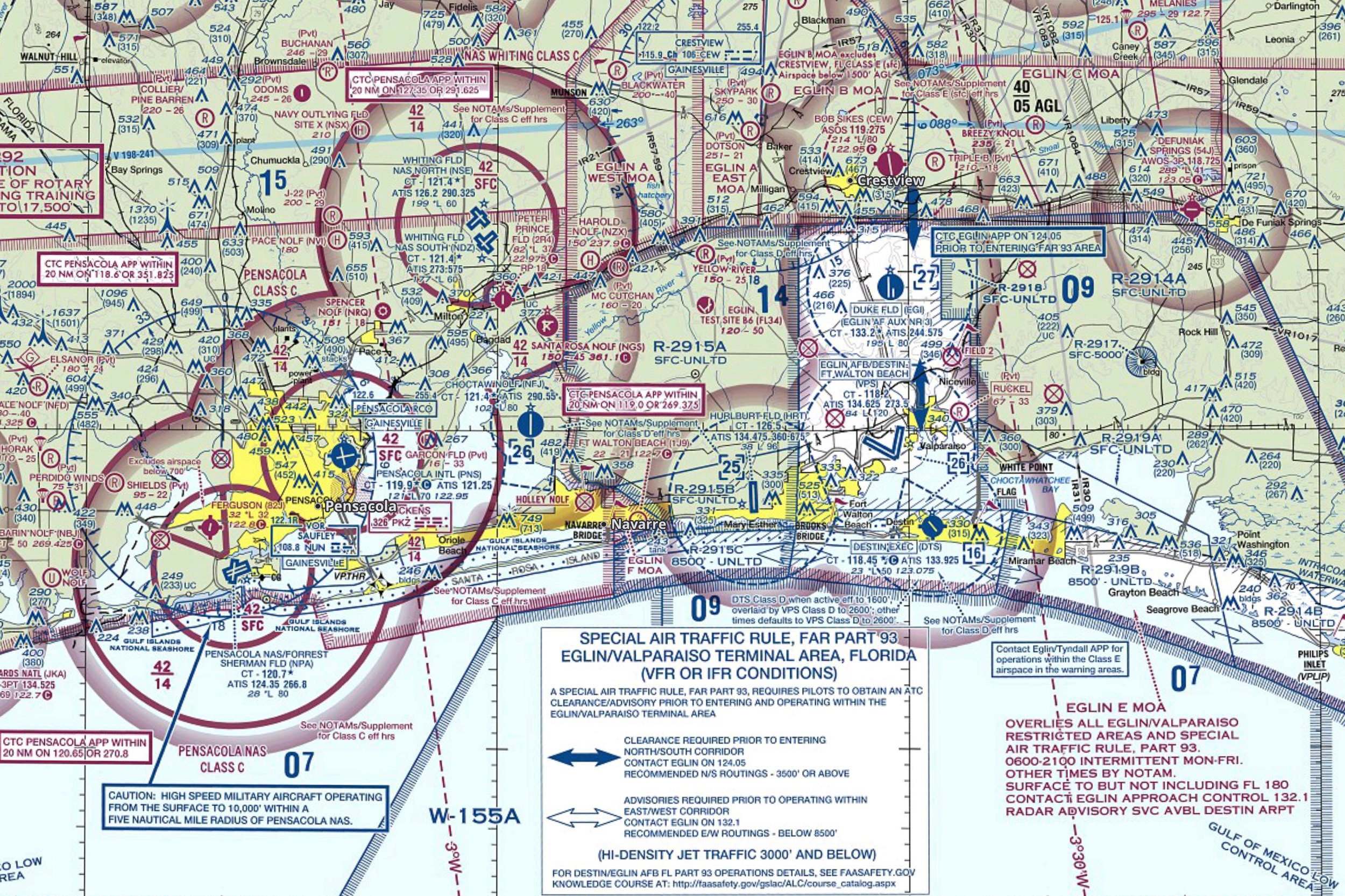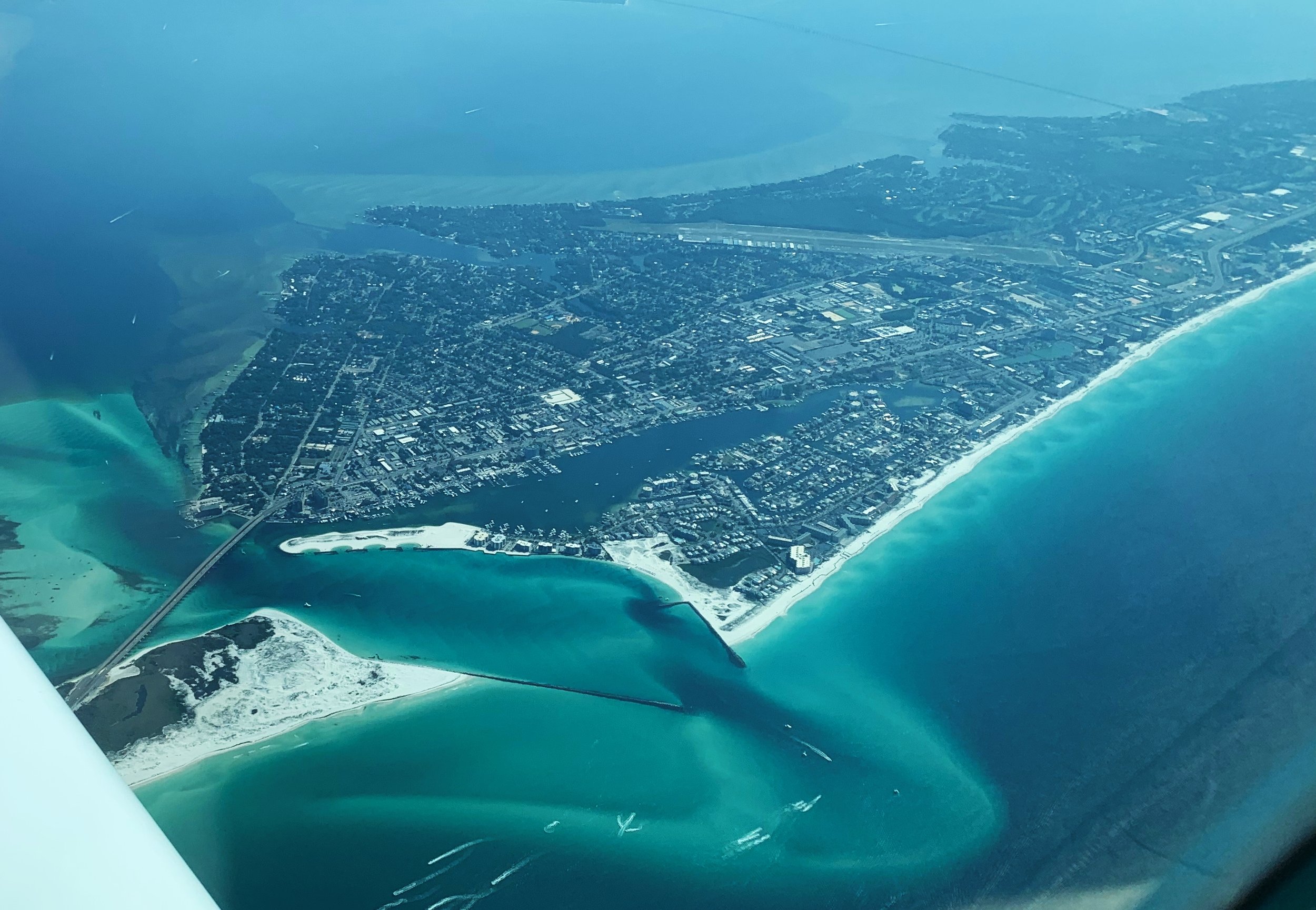To Miami and Beyond!
When our older son Jackson left home to attend the University of Miami last fall, I knew sooner or later I’d find a reason to fly our Bonanza, 3738R, down from Houston to see him there. Sure enough, when it came time to move out of his dorm, the call came through: “Dad, I have a LOT of stuff to get home. Wanna come get me?” The thought of spending money on shipping or extra bag charges that could instead buy avgas was abhorrent, and we quickly formed a plan for me to get him, and his stuff, home.
As quickly as it formed, it fell apart. As teenagers are wont to do, Jackson better-dealed me to join a four-day road trip home with three classmates, via Orlando and New Orleans. Hard to argue with that. “But hey, Dad, come down and we can hang out here for a couple of days before I leave. And, uh, there’s no room in the car for my stuff.” Alas, I’d been relegated to cargo hauler, but I couldn’t pass up the chance to fly down the Gulf Coast and sightsee in Miami with him for a few days . . . .
I took off from my home base, Houston Southwest Airport (AXH), at sunrise for a quick IFR hop to nearby Chambers County (T90) for the cheapest self-serve gas around. With tanks full (114 gallons, including the two 20-gallon D’Shannon tip tanks), I launched toward Miami.
My plan had been to follow the coast VFR all the way to Venice, FL, walk to lunch at nearby Sharky’s on the Pier, then fly the short remaining leg east across Florida to Miami. But, as usual, storms were forecast to build across southern Florida in the early afternoon. I wanted to beat them to Miami, so I’d packed a lunch to save the hour stop.
I climbed to 7500’, picked up flight following over Lake Charles, tuned the XM Radio to Radio Margaritaville, and life was good. That said, of all the times I’ve flown the Gulf Coast — including this one — I’ve never managed to hear Radio Margaritaville play Jimmy Buffett’s “Pascagoula Run” while actually overflying Pascagoula. Hope springs eternal….
Along the Gulf Coast this time of year, you can usually count on the clouds to build just inland. They did so, both coming and going (photo below from the return trip, near Santa Rosa Beach). This daytime phenomenon results from two causes. First, cooler air blowing ashore from the relatively cooler gulf heats up and rises as it flows over the warmer land, condensing into clouds. And second, this cloud formation is helped along by coastal frictional convergence, where air moving relatively quickly over the aerodynamically smoother water “stacks” just inside the coastline as a result of “catching” the air that slowed as it moved inland over the more aerodynamically rough land.
So the route along the coast was smooth, and Destin quickly approached. The airspace around Destin is ridiculously complicated, with multiple overlapping Restricted Areas, Military Operations Areas, Warning Areas, Alert Areas, and a nearby Air Defense Identification Zone (ADIZ) border. The area has its own regulations (FAR 93.80-93.83). And for good reason — it’s the confluence of Eglin Air Force Base (home to the 96th Test Wing, the Air Force evaluation center for air-delivered weapons), Hurlburt Field (home of the Air Force Special Operations Command) and Duke Field (home of the 919th Special Operations Wing). The regs, which you won’t find in the ASA FAR/AIM but are helpfully summarized on the sectional, create north-south and east-west corridors requiring a clearance to enter. They’re easy to follow: eastbound along the coast, simply contact Pensacola Approach for a clearance, stay below 8500’, and keep inside the 3-mile-wide, 50-mile-long corridor just off the coast. Stray from the corridor and you’re sure to get shot down by an experimental Air Force missile. But the scenery along the coast is worth it….
After leaving the Destin area, I did a quick stop-and-go south of Panama City at Apalachicola Regional Airport (AAF), purely because “Apalachicola” is fun to say, and I wanted it in my logbook.
Next stop: bucket list George T. Lewis Cedar Key Airport (CDK), about 80 miles north of Tampa. It’s surrounded by water on all sides and routinely atop “Fun Places to Fly Your Airplane” lists. Cedar Key’s also a short field challenge: it’s Florida’s shortest paved public runway at 2355’. For landing, it’s effectively even shorter, with displaced thresholds at both ends (338’ on the preferred Runway 23). The approach and landing are picturesque, and I skimmed the trees and water to land on Runway 23. After some quick reconnaissance for a future family visit — you’ve got to love a place with a website that advertises that “Camping by the plane is not allowed, but not rigidly enforced.” — I lined up for takeoff. A 2300’ short-field, sea level takeoff in the Bonanza should be a breeze. Nevertheless, when passersby stopped to watch, I had to remind myself that with so little weight — just pilot plus half a tank of gas — my takeoff roll should be only ~750 feet. The end of the runway approached quickly, but the outcome was never in doubt! After a circle for a photo of the airport, I headed south down the west coast of Florida.
The run down the coast was beautiful and smooth. After waving goodbye to Cedar Key, I dialed the engine back to lean-of-peak operation, conserving fuel now that I wasn’t stopping in Venice. Tampa ATC left me alone after confirming I planned to stay out over the water. Tampa, Venice, and Fort Myers slid by, then I made a quick fuel stop at Marco Island (MKY) to tanker some fuel to Miami. I then cut across the Everglades to Miami Executive Airport (TMB), effectively cruising an aerial version of the Tamiami Trail (so-called because the road, U.S. Highway 41, connects Tampa to Miami). My long-time flight instructor Jenifer Pekar had also clued me in that the cool kids call Miami Executive “Tamiami Field.”
Jackson had a commitment that afternoon, so I headed off for one of my favorite pastimes, running with Raven. Literally every afternoon since January 1, 1975, Robert “Raven” Kraft has run 8 miles down South Beach. Anyone can join him, just show up at the 5th Street Lifeguard Stand at 5:30 p.m. EDT (4:30 p.m. EST). Finish the run with him (no walking allowed) and he bestows on you a nickname, his choice, which he’ll forever call you with astonishing memory on all your future runs or chats together. This was my fifth run with Raven. On my first, seven years ago (coincidentally on his 65th birthday), Raven spun some great tales of South Beach history and, when prodded, recounted some of his harrowing runs through hurricanes. At some point we got to talking about flying and our Beech Bonanza A-36, and as a result, when we finished that run, he dubbed me “Six-Seater." I’ve answered to it ever since!
Raven’s a real inspiration, and it’s well worth running with him if you’re in Miami. (Raven dubbed my younger son, Sam, a high school baseball player, “Curveball.” Jackson intends to run this year.) Most runners always seem to be training for a future race, but as Raven sings in his country ballad “Eight Miles Gone,” he’s “training for tomorrow.” A lot’s been written about him (see Running with Raven and the podcast Raven—I have a cameo in Ch. 7), but this short trailer to his documentary gives you a sense of the man and his mission….
The next day, before we got to work packing up, Jackson and I headed out for another bucket list flight, a cruise down the Florida Keys. From Miami we headed south, cut across the small keys of Everglades National Park just west of Key Largo, then loosely followed the stunning waters along the Overseas Highway (US Hwy 1) to Marathon, an island community spread across multiple keys. Its airport, Florida Keys Marathon Int’l (MTH), sits on beautiful Vaca Key. The helpful folks at Marathon Jet Center (recently renamed Million Air Florida Keys) provided a courtesy car for our two-mile drive to a fresh seafood lunch by the water at Island Fish Co. On the way back to the airport, we stopped by Marathon institution Sweet Savannah's for a slice of their award-winning key lime pie (key lime is the official pie of Florida, per Fla. Stat. § 15.052). Jackson and I left the flight out to Key West for another day, given the afternoon storms closing in on Miami. We were safely tied down at Tamiami by the time the daily afternoon deluge provided a free plane wash.
After a couple of fun days in Miami, Jackson helped me load up the plane for the trip home. When not loading passengers (who are dense, physically speaking), it’s always amazing to me the volume of cargo (versus the weight) a Bonanza will hold. Having flown full-to-the-brim cargo loads of hurricane supplies before, stuffing an entire dorm room’s worth of chattel into the cabin didn’t even seem like a challenge….
I sent Jackson off to launch his road trip, and, after an “ATC Zero” take-off caused by a Tamiami control tower power outage (the tower was reduced to using a handheld radio), had a pleasant, uneventful flight home on a slightly more direct route, fueling up at the aptly named Winter Haven Regional Airport (GIF), near Lakeland. With an early start and an hour time difference, I was home for lunch. This trip was a hoot and fostered some solid father-son bonding. It was also an excellent reminder of the capability and versatility of the Beech Bonanza.
NOTE: ABS Magazine, the monthly publication of the American Bonanza Society, published a version of this article in its September 2022 issue. To read or download the ABS Magazine version, click this button:


























